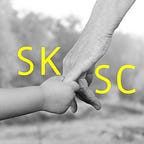Heroin Hell
By The Safe Kids Security Council
As a police officer when I used to respond to heroin overdoses I would almost be annoyed that I would have to risk my life along with my first responder partners to save a drug addicted heroin user. I knew this was my job and that I signed up for this, but logically I struggled internally putting innocent drivers on the road at risk by responding with emergency lights/sirens to these residences. To be clear when I say residences, I mean from the worst trailer in the park you have ever seen to the home you wish you could afford. Heroin has created a living hell for so many parents and users that I cannot begin to explain the tragedy I have seen caused in the wake of this disaster. The situation is real and statistics show that heroin deaths have tripled in five years from 2010–2014, according to the Drug Enforcement Administration.
So what changed me as a police officer, and my attitude about heroin? I responded to a heroin overdose death and the parents lived at a separate residence in the city I work. I was tasked with delivering the death notification, which in my opinion is one worst things police officers have to do, many live in my mind for years after the fact and this one is no different. I knocked at the door and asked the resident if they were the parents of our victim. Both the mother and the father were in the living room and the mother immediately asked: What’s wrong is he okay? It was at this point that I delivered the crushing news that their son had died of a heroin overdose at the young age of 24. I literally watched as both parents crumbled to the ground overcome by emotion of the news. It was at this moment that I realized the ripple effects and it changed my perspective on “saving lives of heroin addicts.” I realized that addiction is so much more than just the user, but the entire family and support system that become involved and suffer through the impacts of the decisions of the heroin addicted user. The mother told me he was a heroin addict since he was a teenager and she tried to help him, but nothing worked.
Our police department now uses a product called Naloxone, which is used to reverse the effects of heroin with an opioid inhibitor. We have saved several children and parents from overdosing on this dangerous drug. I actually have an entirely different perspective on Naloxone now; every save we get, I feel that it may be an opportunity for treatment and help instead of my former thought process: just another way to allow the user to use again. I know that heroin spans ages, sex, and income levels. I think that some don’t want to admit that heroin has a cascading effect, but I have seen it and it’s not pretty.
I have been fortunate enough to be able to see many sides of the heroin epidemic. I worked narcotics and placed these dealers killing our children in jail. I have seen overdoses, deaths, and saved lives with Naloxone. I have taken users to the hospital for relief from withdrawal of heroin and I have seen families destroyed. I am no expert, but this article offers some perspective and if some of the tips below get you to recognize signs that someone you know may be using heroin — and it gets them help and recovery — then it has value.
Things to watch out for or signs that someone may be using heroin:
-Pinpoint pupils (drug in their system)
-A straw cut down often users will snort the drug (no track marks)
-Runny nose/itchy nose
-Small wrappers, lottery folds, and tinfoil folds
-Hypodermic needles/spoons
-Track marks on arms, legs, neck, thigh, feet, anywhere there is a vein
-Sores that do not heal or abscesses
-Weight loss
-Nodding off after periods of euphoria
-Belts or some type of tourniquet device
-Stealing or the need for cash
-Decreased level of caring about work/homework
Some treatment options or to learn more about heroin abuse:
Fact sheet provided by the Drug Enforcement Administration
Consider an intervention with your loved one
The Safe Kids Security Council (“SKSC”) blog exists to share personal experiences and information related to the dangers that impact children. The views, opinions, experiences, and advice provided within this blog belong solely to the individual contributors and should not be interpreted as legal or medical advice. This blog is provided for informational purposes only. The SKSC makes no representations as to the accuracy, reliability, or completeness of the information provided herein. The SKSC will not be liable for any errors or omission in this information or any losses, injuries, or damages from the display or use of this information.
This blog does not represent people, institutions, or employers that the individual contributors may be associated with in a professional or personal capacity.
This blog may contain external links to other sites for the convenience of its readers. The SKSC does not control or guarantee the accuracy, relevance, timeliness, or completeness of information on external sites.
